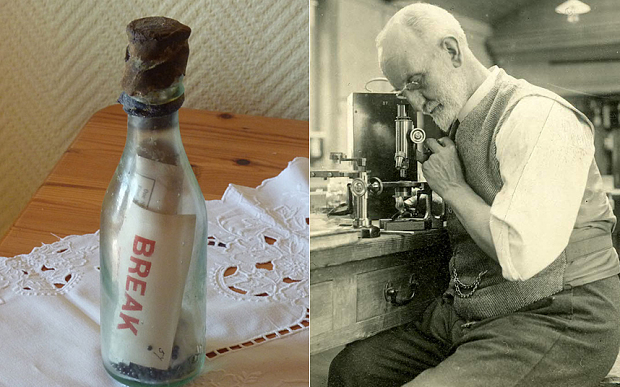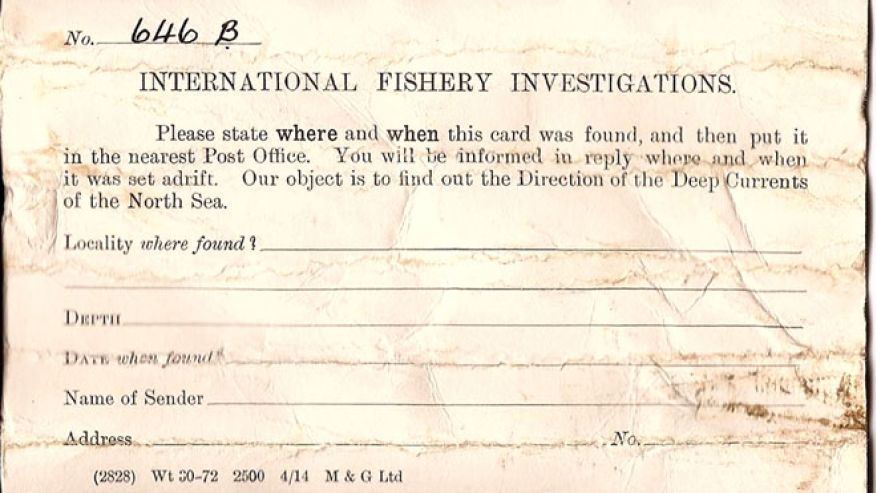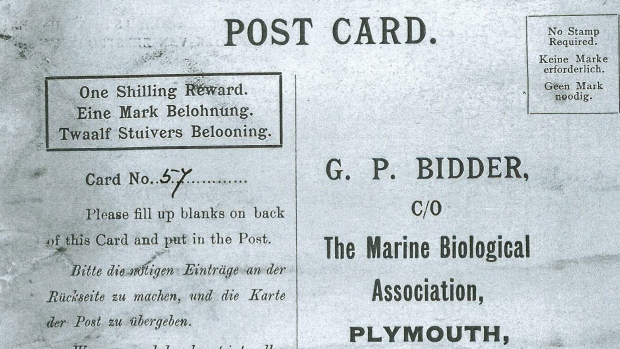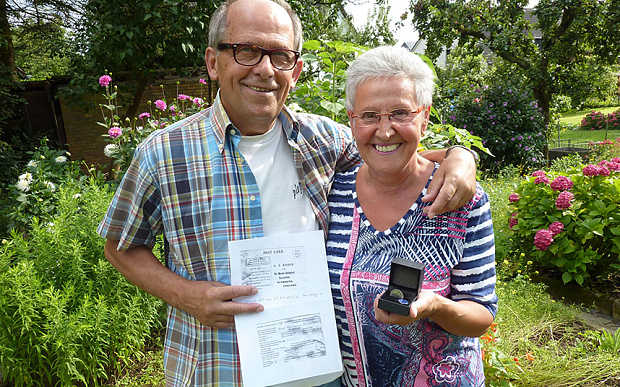
Earlier this year, Marianne Winkler, a retired postal worker and her husband were vacationing on the North Sea island of Amrum, Germany, when they stumbled upon a bottle with a message inside! And it was no ordinary letter either, but one written by an Edwardian British scientist studying undersea currents.
The German residents says they tried to extract the message without damaging the bottle, but in the end had to go with the clearly written directions that simply said "Break." Inside was a postcard with instructions printed in three languages, English, German and Dutch. It asked the finder to provide information about how and where the bottle was discovered and mail the card to the Marine Biological Association in Plymouth, U.K. Those that complied were promised a shilling for their effort.

Realizing they may have found something that would still interest the Marine Biological Association, Marianne placed the old postcard inside an envelope and mailed it to the stipulated address. Turns out, she was right.
The bottle was one of 1,020 that George Park Bidder, the Association's former President had released into the North Sea from 1904 and 1906 to investigate undersea currents. To ensure they would be swept by the currents below the ocean's surface, the bottles were designed to float just above the sea bed.

According to the association's communications director, Guy Baker, most of the bottles were found within months after they were released. Some were caught up in deep sea fishing nets, while others had just washed ashore. The data gathered from the bottles allowed Bidder to prove that deep sea currents flowed from east to west in the North Sea.
He also discovered that the European plaice, a popular species of flatfish, generally swim against the deep currents. This tidbit of information proved to be extremely helpful for the commercial fishermen that frequented the area.

The association officials believe that the bottle was dispatched to sea in 1906, and that it may be the oldest message in a bottle discovered, a fact that still needs to be confirmed by the Guinness World Records. The current record is held by one that was found 99 years and 43 days after it was released in 1914, as part of a similar scientific experiment.
Baker says they are not sure if the bottle has been tossing around in the ocean the entire time, or if it has spent numerous years buried under the sand. Either way, he is thrilled that it was finally discovered. To show their appreciation and make good on Bidder's promise, the Marine Biological Association gifted the couple with a shilling that they managed to acquire on auction site eBay.
Resources: telegraph.co.uk, zmescience.com